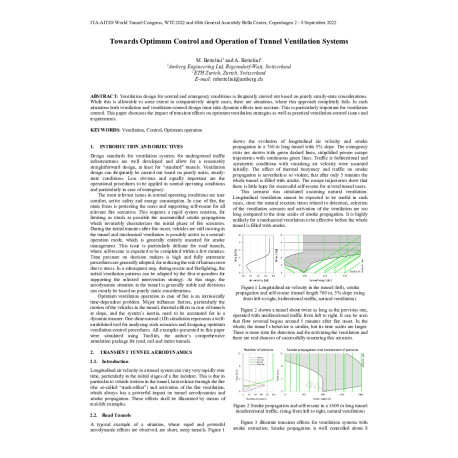Cart
0
0
No document
0,00 €
Total
Document successfully added to your shopping cart
Quantity
Total
There are 0 items in your cart.
There is 1 item in your cart.
Total documents
Total shipping
To be determined
Total
Search & filter
Search for a publication
Search & filter
Viewed documents
New


Towards Optimum Control and Operation of Tunnel Ven tilation Systems
Towards_Optimum_Control_and_Oper
Ventilation design for normal and emergency conditions is frequently carried out based on purely steady-state considerations. While this is allowable to some extent in comparatively simple cases, there are situations, where this approach completely fails. In such situations both ventilation and ventilation-control design must take dynamic effects into account. This is particularly important for ventilation control. This paper discusses the impact of transient effects on optimum ventilation strategies as well as practical ventilation-control issues and requirements.


